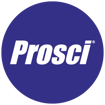Integrating Two Complex Organizations
Integrating two organizational entities was part of the health system’s broader acquisition and growth strategy. In addition, each new integration required the deployment of an enterprise resource planning (ERP) system. Previous integrations involved substantial challenges for existing hospital staff in HR, IT, Finance and Supply Chain functions in adopting a new ERP system while maintaining effective patient care. Also, both of the new organizations needed to be integrated within the short time frame of two years. Leadership recognized the need to create a repeatable method for addressing the people side of these integrations.

The health system had recently defined change leadership as a leadership competency. They were further refining the leadership initiative by identifying the behaviors and metrics that would gauge individual and organizational progress. Leaders in the HR function and the Integration Office decided together to invest in a consistent change management methodology to address these requirements.
Applying change management
Many people throughout the health system were already familiar with the Prosci change management methodology and appreciated its simplicity and flexibility. The fact that the Prosci Methodology is based on constantly updated research further added credibility to the change management initiative.

Relabeling and setting expectations
In the planning stages, the change management lead made a point of relabeling his team and their activities to highlight change management. The team initially focused on implementation and communication, but part of the change management initiative involved changing the team’s name to "change management." This allowed the change management lead to restructure the team with change management best practices in mind. It also ensured that all stakeholders—including sponsors—took change management seriously and recognized its role in the project.
Once the team was named and assembled, it began to outline the necessary plans for project success: the sponsorship roadmap, communications, coaching, resistance management and training. This was also a part of setting expectations; now everyone involved in the integration knew that change management was more than communication or training. They knew it included all five plans.

The integration planning stage included a focus on sponsorship, on sizing and scoping the project from a change management perspective, and then on creating the five change management plans Prosci recommends for project success.
Engaging and educating sponsors
Commitment from key members of Human Resources, who were responsible for the people-side management of the health system’s integrations, gave change management the priority it needed to be successful. Based on Prosci research revealing that effective change sponsorship is the most critical success factor of a change initiative, the first activity that the change management team took on was creating a sponsor coalition and implementing a series of biweekly sponsor meetings. These meetings featured informal education on the role of a change management sponsor, ensuring that every sponsor understood their role and how to fill it effectively.
Building this knowledge was critical to the project, as it kept the sponsors engaged and committed to the change management work. It also provided space for sponsors to receive updates, clear up any confusion, and remove any roadblocks that came up as the project continued.
Coaching sponsors
In addition to sponsor briefings, the change management team conducted one-on-one coaching with sponsors to help them stay active and visible, and to communicate clearly about the integration to their employees.
Coaching end-users
The team also launched a robust ERP coaching program, pairing the health system leads in HR, Finance and Supply Chain with the staff members fulfilling the same function at the two new organizations. The program’s onboarding plan allowed these individuals to meet in person and build relationships with each other and the leads, and its training plan empowered the staff to learn the system with enough time, structure and information to succeed at go-live.
ADKAR assessments to address gaps
To gauge progress, the change management team included several different assessments throughout the life of the integration. Two ADKAR® readiness surveys helped the change management team see where the gaps in adoption were happening, allowing them to address these gaps by correcting the change management plan. A third survey provided insights once the ERP system was live in HR and about to go live in IT and Finance.
Results
The change management work done at the beginning of the integration immediately paid off with high engagement and high Awareness and Desire to participate in the integration. The ERP integrations at both new organizations proved successful, plus they helped establish a standard approach to the people side of change for future integrations. In addition, change management maturity rose throughout the health system.
Project success
Employee engagement levels, already high, were sustained throughout the project, despite the disruption caused by the integration. In fact, even with hiccups on the project management and technology side of the integration, employees’ personal motivation to participate in the change remained above 90% for the life of the integration.

Overall, the ERP integrations happened more seamlessly, fostered higher employee engagement, and drove higher adoption rates than previous integrations. This allowed staff to spend their time and energy taking care of patients, not worrying about technology.
Improved change capability
The health system as a whole saw a boost in change management capability, in large part due to the publicity of change management on the ERP integrations. Departments that now have either have a certified change practitioner or are using the Prosci Methodology and tools include: Patient Experience, Integration, Human Resources, Nursing, Supply Chain, Electronic Medical Records, and Process Improvement. In addition, the Integration Office now has a repeatable and proven process for addressing the people side of change for ERP integrations, and the organization as a whole now has demonstrable behaviors around change leadership.
With the success of change management for the ERP implementation, change management is playing an even larger part in the activation of a new multi-million-dollar hospital. For this project, the change management work includes formal change management training with managers and staff. Looking ahead to this project and others, the health system will also expand its change management team by training several staff members to become trainers in the Prosci Methodology.

Founded in 1994, Prosci is a global leader in change management. We enable organizations around the world to achieve change outcomes and grow change capability through change management solutions based on holistic, research-based, easy-to-use tools, methodologies and services.




/Case%20Study%20Graphic-01.webp?width=175&name=Case%20Study%20Graphic-01.webp)


/Case%20Study%20Graphic-150x73.webp?width=175&name=Case%20Study%20Graphic-150x73.webp)